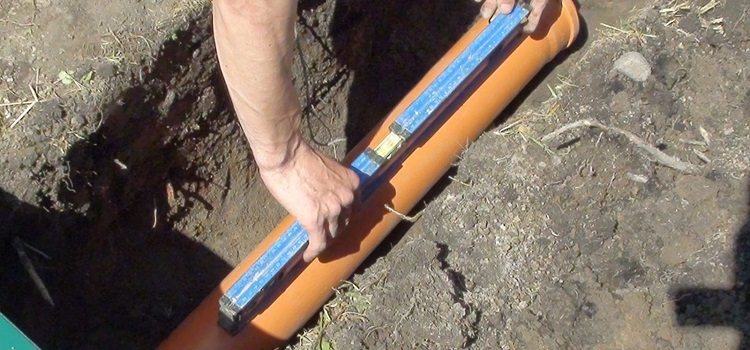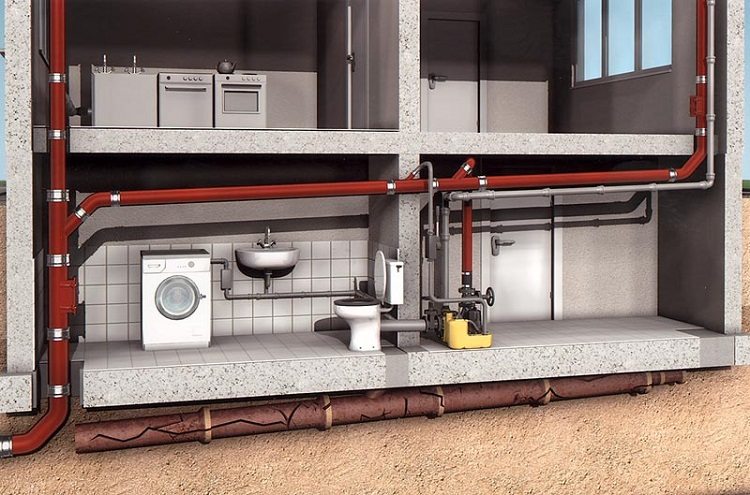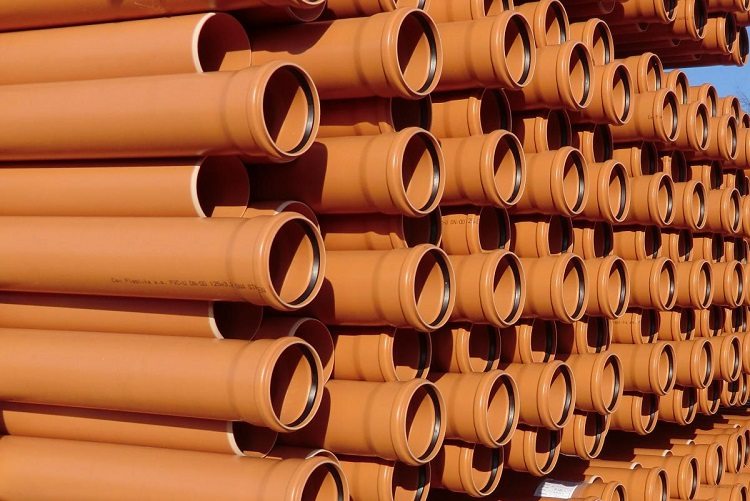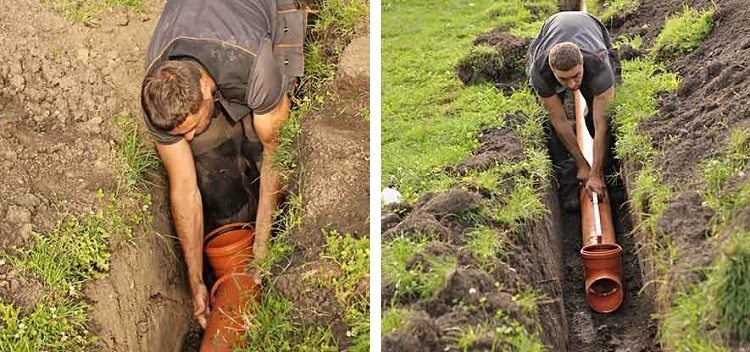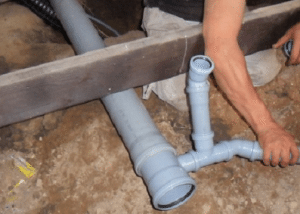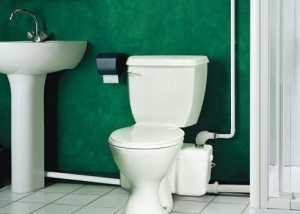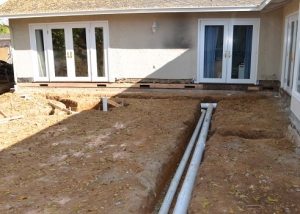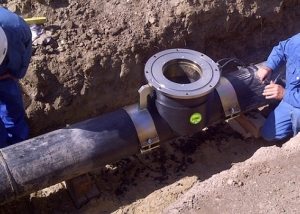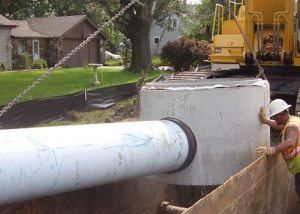The slope of sewage pipes is one of the most important conditions for ensuring the natural outflow of wastewater. The correct course of drains will be the key to long-term system performance. Home network operates by gravity. If the slope of the sewer is insufficient, stagnation can occur in the system, which will require regular cleaning and complicate operation.
Content
Slope of sewer pipes in private houses
Replacing sewer pipes in an apartment should begin by familiarizing yourself with existing recommendations. Design and construction is based on the implementation of building codes and regulations (SNiP). Norms SNiP establish the minimum slopes of sewer pipes applicable to the internal and external drainage system.
Note! It is not recommended in a private house to set the slope of the sewer pipes at the maximum value.
Too large a slope of the sewer pipe will increase the rate of fluid outflow. In this case, solid impurities and particles will settle on the inner surface of the drain, which over time will lead to stagnation, disruption of siphons and the spread of unpleasant odors. In apartments it is sometimes difficult to comply with the required slopes for sewer pipes. It happens that, whatever the slope is, it is not always sufficient. In such cases, a vertical gasket is used.
Whatever the project, it is better not to exceed existing standards and parameters. To clarify the correct determination of the slope of the sewer pipes in a private house, it is better to contact a specialist.
Calculation of slopes of the internal sewerage
Sources of drainage are devices of the internal network of a house or apartment. These include a toilet, shower, sinks, washbasins, toilet bowl. For uninterrupted outflow of water, the slope of the sewer pipe must be taken into account.
SNiP measures the slope of sewage pipes only in centimeters. The minimum permissible slope of the sewer pipe must be 2 cm per 1 linear meter of the product.
In other words, each subsequent meter of the sewer pipe is inclined by 2 cm, i.e. located lower. Note that in such measurements, the angle must be measured in units of length, and not in degrees, since otherwise the calculations are performed with large errors. This will lead to errors in the laying of both the internal and external sewer networks.
In order to simplify the computational operations to determine the slope of the sewer pipe in a private house, a simpler formula is used.
Determination of tube fullness
The calculation of the level of fullness of a plastic, cast-iron or asbestos-cement pipe allows you to calculate the speed of movement of wastewater through it to avoid clogging. Depends on the fullness, which deviation in a private house of the sewer pipe is better to give preference. The calculation is performed according to the formula:
H = V / D
where H is the content, B is the height of the level of effluents, D is the diameter of the pipeline.
Note! The maximum value of filling is 1, in which case the pipe is 100% full and there is no slope of the internal sewage system.
The percentage of filling the sewer pipe with drains is better to choose at the level of 50-60. It is also necessary to take into account the material from which the pipe is made and its angle relative to the septic tank. Asbestos products and cast iron pipes quickly fill up due to the high roughness of their surface.
The main goal is to calculate the maximum permissible speed for sewage. The same principle is used to determine the minimum slope of the external sewage system. Since pipes of large diameters are used for external networks, the slope will also be large.
Features of determining the slope of sewer pipes
To determine what the slopes of the sewer pipes should be, one should have information about the length of the entire sewage system. Background information provides values with fractional values.
Table 1
| Pipe section in cm | What slope of the sewer pipe is needed | |
| Minimum | Normal | |
| 20 | 0,005 | 0,008 |
| 15 | 0,007 | 0,01 |
| 10 | 0,012 | 0,02 |
| 5 | 0,025 | 0,035 |
Consider a specific example of the calculation of the slope of the sewer in an apartment or a private house. Suppose a system is installed from pipes with a diameter of 10 cm and its total length is 15 meters. The total angle of the sewer pipes in a private house (apartment) is found by multiplying the pipe length by the slope, which is specified in GOST or SNiP.
In our case, the calculation looks like this: 15 m (system length) * 0.02 (standard deviation) = 0.3 m or 30 cm.
The resulting figure means that the difference between the installation point of the starting point of the pipe and the end is 30 cm.
Normalized slope values of sewer pipes
The correctness of the slope of the sewer pipe depends on its diameter. The table provides information on what the slope of the sewage system should be, depending on the type of device.
table 2
| Device | Diameter of the drain pipe in cm | The distance between the siphon (without ventilation) and the central drain in m | Slope required for sewer pipe |
| Bath | 4 | 1-1,3 | 1 to 30 |
| Toilet bowl | 10 | until 6 | 1 to 20 |
| Shower | 4 | 1,5-1,7 | 1 to 48 |
| Sink | 4 | 0-0,8 | 1 to 12 |
| Washing | 3-4 | 1,3-1,5 | 1 to 36 |
| Bidet | 3-4 | 0,7-1 | 1 to 20 |
| Combined drain (bathtub, shower sink) | 5 | 1,7-2,3 | 1 to 48 |
| Riser (central) | 10 | ||
| Branches from the central riser | 6,5-7,5 |
SNiP, in addition to regulating the slope of the sewer pipe, determines how, in general, the sewage complex should be mounted. The basic principles are as follows:
- A suitable sewage slope in a private house depends on the diameter of the existing riser.
- For risers with a diameter of up to 11 cm, an angle of 2 centimeters per meter is set.
- The minimum deviation of sewer pipes with a diameter of up to 5 cm is three cm per linear meter.
- The slopes of the sewage system (what they should be) for pipes with a cross section of 16 cm are set at 0.8 cm for each meter of the drain.
Note! The slope of the sewer pipe is taken into account at the design stage of a building or structure.
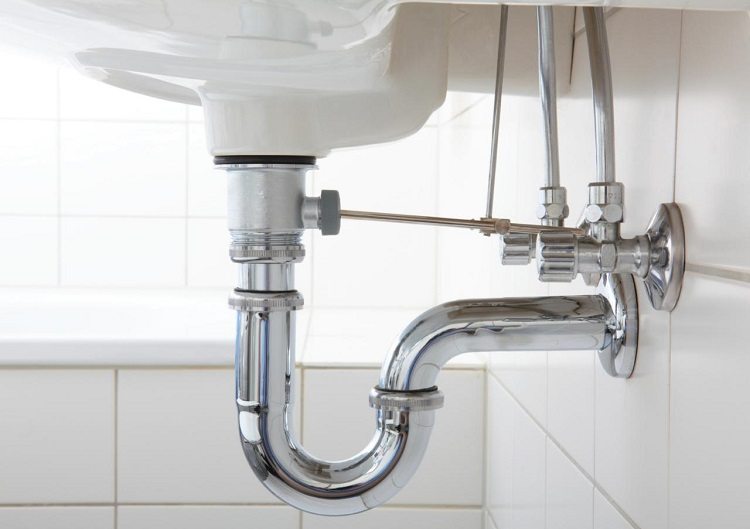
The drain pipe of each device in the bathroom has its own diameter, so there are pipe slope standards for all plumbing fixtures
Slope standards for external sewage
External sewerage discharges recycled sewage from plumbing fixtures inside the house to a septic tank. Often for mounting this system cast-iron, asbestos-cement or polyethylene corrugated pipes are used. Since products for the external network have large diameters, there are separate requirements for SNiP for them:
- If the outer pipe has a cross section of up to 15 cm, then the minimum sewage slope is set at 0.8 cm per meter.
- The maximum value of the drainage slope is 15 cm per meter.
- The minimum sewage slope for a highway with a diameter of 20 cm is 0.7 cm per meter.
The most suitable for home will be a gravity flow system. It is provided by the formation of the desired relief on the route of the pipeline. Trenches that dig for external elements should provide sufficient evasion of the external sewage system. Pipes for an external drainage system should be placed lower than the freezing point of the ground. In addition, it is worth applying any available insulation method.
What the slope of the sewer pipes should be depends on the permissible limit values. The best option is between the maximum and minimum. For external sewage, maximum slopes are permissible only when clean water is removed in the absence of the risk of clogging of the pipeline.
Already at the design stage it is necessary to determine what the slope of the sewer pipes should be. From the correct organization of the sewage system depends on its durability and efficiency of operation.
